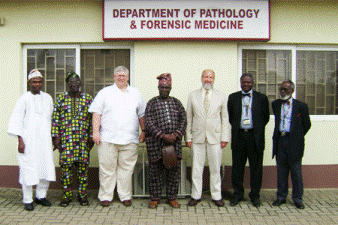Natural Resources, School of

Karl Reinhard Publications
Document Type
Article
Date of this Version
2018
Citation
Published in Journal of Archaeological Science: Reports 20 (2018) 791–798
DOI: 10.1016/j.jasrep.2018.06.024
Abstract
For archaeological studies it is always necessary to consider taphonomic factors that could have influenced in ancient material preservation. Parasite eggs are usually highly degraded in ancient sites dated from all periods of time and taphonomic factors are mentioned to explain absence and low quantity of eggs found. In this study, we compare parasite egg recovery of three Great House latrines: two from Aztec Ruins (Rooms 219 and 225) and one from Salmon Ruins. We compared through statistical regression the recovery of eggs with the abundance of two classes of decomposers: mites and nematodes. These microorganisms have relation with nematode larvae and parasites remains degradation, respectively, mostly in moist environments. Pinworm was the only parasite found in the sites studied. Prevalences were 32.8% at Salmon Ruins, 72.7% at Aztec Ruins Room 225 and 14.3% at Room 219. Egg preservation was considered good at Salmon Ruins and Aztec Ruins Room 225. At Room 219, the eggs were badly preserved and there was a significant statistical correlation with mites (multiple r (18) =0.64/P=0.002). This correlation could indicate that mites could be involved in preservation, and consequently that pinworm prevalence in this latrine is underestimated. Abiotic factors such as humidity could have possibly favored the biological relation. Considering the extreme egg degradation at Room 219, it is not possible to strictly compare parasite data with other Ancestral Pueblo sites, even with Room 225, located at the same site. Room 225 prevalence is the highest found in Ancestral Pueblo sites until now. Taphonomic analysis shows that decomposers operated at different levels of severity, despite the latrines' close location.
Included in
Archaeological Anthropology Commons, Ecology and Evolutionary Biology Commons, Environmental Public Health Commons, Other Public Health Commons, Parasitology Commons


Comments
Copyright © 2018 Elsevier Ltd. All rights reserved. Used by permission.